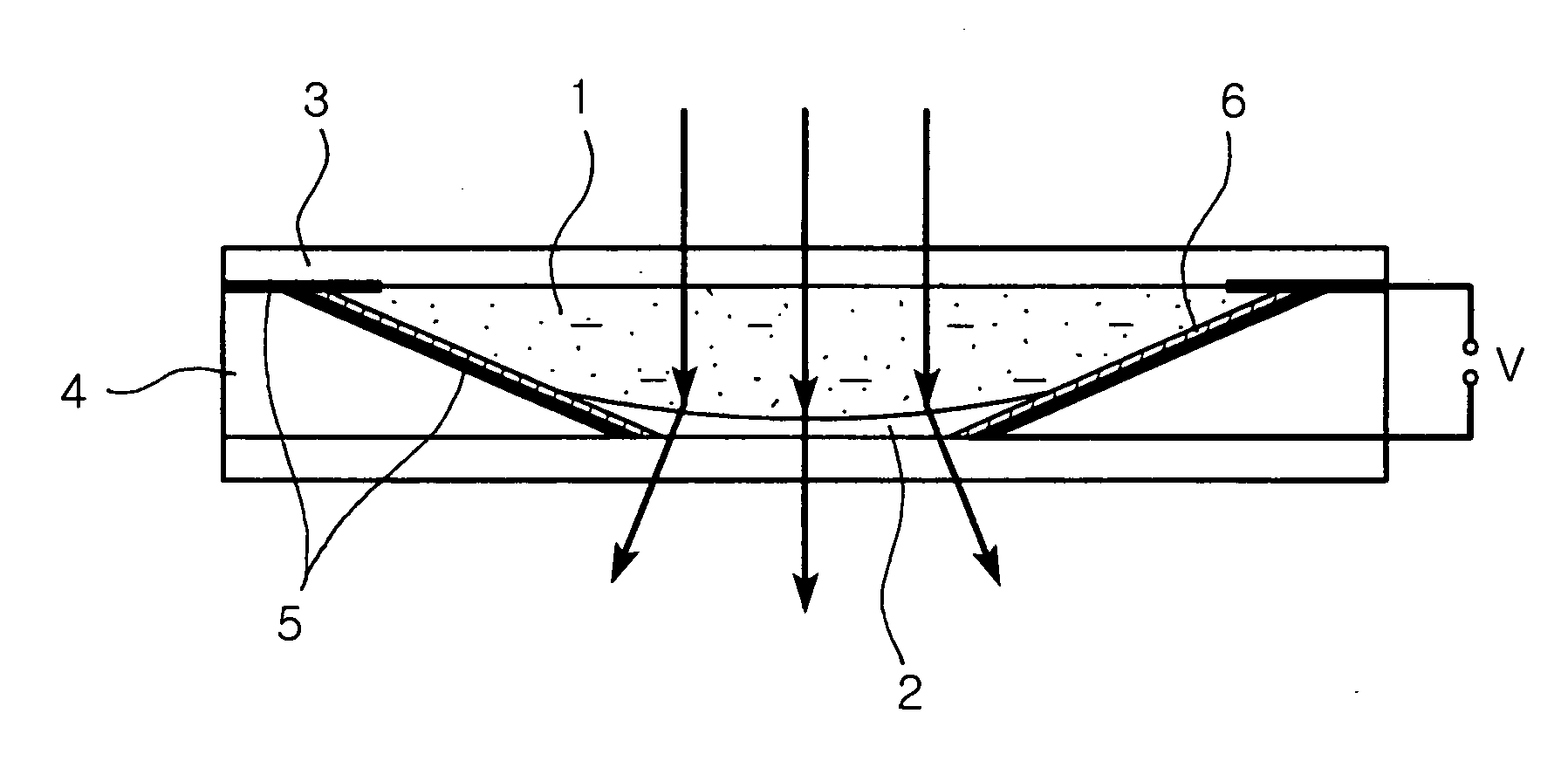Liquid for liquid lens with high reliability
a liquid lens and high reliability technology, applied in the field of liquid lenses, can solve the problems of incomplete mechanical joining of elements, liquid lenses have not yet been put to practical use, liquid lenses have not been commercialized, etc., and achieve the effects of reducing operating voltage, large difference in refractive index, and mixing between solutions at the interfa
- Summary
- Abstract
- Description
- Claims
- Application Information
AI Technical Summary
Benefits of technology
Problems solved by technology
Method used
Image
Examples
example 1
[0040] An electrolyte solution was prepared by mixing 60% by weight of H2O, 30% by weight of 1,2-propanediol and 10% by weight of LiCl. An insulating solution was prepared by mixing 83% by weight of a silicon oil and 17% by weight of 1,6-dibromohexane. A liquid for a liquid lens was produced by mixing the electrolyte solution with the insulating solution in a ratio of 1:1.
[0041] The viscosity and the refractive index of the electrolyte solution and the insulating solution were measured using a pycnometer and an ABBE refractometer, respectively. A glass vial (20 ml) was filled with the electrolyte solution and the insulating solution in a ratio of 1:1.
[0042] A reliability test at a low temperature was conducted by allowing the glass vial filled with the electrolyte solution and the insulating solution to stand at −40° C. for 48 hours or more. After another glass vial filled with the electrolyte solution and the insulating solution in a ratio of 1:1 was allowed to stand at +85° C. f...
PUM
 Login to View More
Login to View More Abstract
Description
Claims
Application Information
 Login to View More
Login to View More - R&D
- Intellectual Property
- Life Sciences
- Materials
- Tech Scout
- Unparalleled Data Quality
- Higher Quality Content
- 60% Fewer Hallucinations
Browse by: Latest US Patents, China's latest patents, Technical Efficacy Thesaurus, Application Domain, Technology Topic, Popular Technical Reports.
© 2025 PatSnap. All rights reserved.Legal|Privacy policy|Modern Slavery Act Transparency Statement|Sitemap|About US| Contact US: help@patsnap.com


